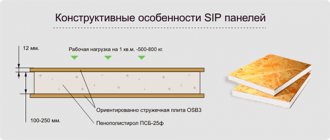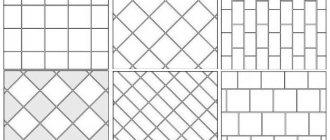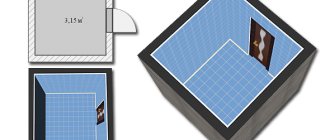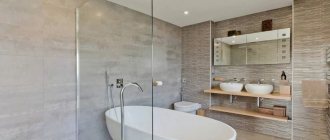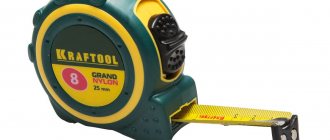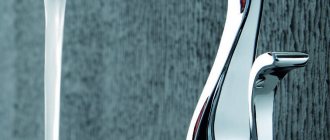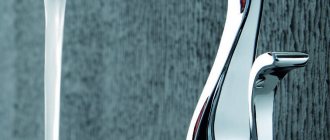Reading time 5 min. As you know, excessively humid and excessively dry air is harmful to our health . It is necessary to maintain air humidity in the apartment at an optimal level - 40-60%. Excessive humidity in homes is a common problem , caused by construction errors, improper use of a humidifier, as well as our daily habits. How to dehumidify the air at home and what is needed for this?
Why do you need an exhaust fan in the bathroom?
When hot water is supplied, the air in the enclosed space of the bathroom is saturated with moisture, which settles on the walls and ceiling. As a result, pockets of mold form and an unpleasant odor appears in the room.
Installing an exhaust fan in the bathroom provides forced air exchange and removal of moisture into the atmosphere.
Fresh air is taken from the room through grilles in the door or through the gap between the canvas and the floor covering.
Dehumidifying air using home methods
You can also dehumidify the air using home methods. Use plants for this . They are effective moisture absorbers, and some perform this function particularly well. Choose an ivy that can be hung high from the ceiling, a fern that will fit into any decor, and a winged flower that does best in a humid environment.
You can also make your own dehumidifier . You will need: a bowl or other container, calcium chloride, a piece of wood and a cloth (maybe an unused sock). If you don't know where to buy calcium chloride, replace it with rice or silica gel . Fill a sock or fabric with calcium chloride and tie tightly. Place a piece of wood in a bowl and a tied bag on top of it. This type of dehumidifier can be placed in the area where the most water collects.
Types of exhaust fans
The design of the products uses an alternating current electric motor with a rotor mounted on bronze bushings or rolling bearings.
The air flow is formed by the impeller on which the blades are mounted. The profile of the blades allows air to be drawn in from the room and thrown into the ventilation duct.
The design provides protection from moisture and dust; household models for hoods are not designed for pumping out combustion products with temperatures above +60°C.
Equipment is usually divided into categories according to installation method and operating principle:
- overhead type, characterized by ease of design and installation;
- duct, designed for integration into existing ventilation systems;
- axial, characterized by increased productivity;
- centrifugal or radial, used in industrial equipment.
Invoices
The fan is equipped with a plastic housing, consisting of a central cylindrical section and a front part with holes for air intake and mounting to a wall or ceiling.
The front part is closed with a decorative cover with an air intake grille and additional elements (for example, a control LED).
The flow is forced into the ventilation duct; to protect against backdraft, a check valve with symmetrical dampers is provided. Can be installed horizontally or vertically (information provided by the manufacturer).
Overhead fans in the bathroom.
Duct
The fans are designed to be integrated into an air duct with a diameter of 100 to 150 mm. Air is taken from the room through special grilles installed on the walls or ceilings.
The ventilation system may include dampers to protect against backdraft. If the method of pumping fresh air into the premises is used, then it is possible to use a heater or air conditioner with a filter to separate fine dust. The motor with the impeller is located in the center of the cylindrical housing, onto which the ventilation system lines are placed.
Duct fans with a motor inside the housing.
Axial
Axial-type equipment consists of a metal or plastic housing, which is attached to the hood or heat exchanger. In the center of the casing there is an electric motor that rotates the impeller with blades.
Fans are used to cool radiators, are installed in industrial ventilation systems and allow combustion products to be pumped out. There are installations with protection against sparks or withstanding the effects of gases heated to +200°C.
Axial fans are attached to the hood.
With check valve
Such a valve can be part of the fan or installed separately in the air duct. The design of the element includes dampers that allow flow to flow in one direction and prevent reverse draft.
In household equipment, the curtains bend under the influence of the pressure of the air mass pumped by the impeller. In industrial installations it is possible to install a power drive. Backdraft protection prevents dust or air with an unpleasant odor from entering the room.
Fan with check valve in the bathroom.
Radial
The radial unit has a casing in the form of a snail, inside of which there is an electric motor with a cylindrical working rotor. When rotating, the impeller blades accelerate the flow, which throws air into the outlet channel.
The resulting pressure difference helps to draw the next portion of gas into the fan, which flows to the impeller. Centrifugal fans can be used for both air injection and vacuum.
Radial fans are divided into categories according to:
- compression pressure reaching 12 MPa;
- the number of air supply holes (on one side or with a symmetrical arrangement);
- intended purpose (due to high pressure, the units are used to pressurize metallurgical furnaces and remove combustion products).
Powerful radial fans.
Instructions for creating an assimilation dehumidifier with your own hands
The operating principle of an assimilation dehumidifier is based on constant air exchange: wet air is physically displaced outside the room and is replaced by drier air from outside. Such devices are good for industrial facilities where significant volumes of gas have to be distilled. Weak sides:
- low energy efficiency (high electricity costs, high heat losses);
- impossibility of use in humid climates (coastal areas).
Industrial assimilation devices are expensive. The starting price of the equipment is 400 thousand rubles. Experts do not recommend making equipment yourself, as it is expensive and is not intended for home use.
How to choose an exhaust fan for a bathroom
Factors that allow you to determine which fan is best for your bathroom:
- power and performance;
- impeller diameter and blade arrangement, which affects acoustic comfort and performance;
- safe operation in humid air conditions;
- support for additional operating modes;
- body dimensions and front panel design.
Power
Performance depends on the power of the electric motor; increasing output and increasing rotation speed negatively affect acoustic comfort.
For bathrooms or kitchens, fans with a power of 7 to 30 W are used. The equipment must provide 8 air exchanges per hour; with a further increase in the parameter, drafts appear.
A number of companies offer fans with additional windings that provide 2-3 rotor speeds. The design allows you to change performance and regulate energy consumption.
A duct fan with a power of up to 30 W is suitable for bathroom exhaust.
Noise level during operation
Household equipment creates noise from 25 to 40 dB during operation, industrial installations with increased productivity hum louder.
Information is indicated on the packaging and in the passport; rubber gaskets are used in the design to reduce vibrations, and the aerodynamic profile of the impeller blades helps to increase acoustic comfort.
It is recommended to choose a fan with minimal noise level, but during operation, chattering may occur (for example, due to improper installation or imbalance of the impeller).
Equipment safety
Household fans are designed to be connected to a 220 V alternating current network. The use of plastic and wires with elastic insulation reduces the risk of electric shock if the operating rules are followed.
It is strictly forbidden to insert your fingers into the impeller of equipment connected to the power supply. If the blades suddenly start operating, they may cause injury.
Availability of additional functions
If a switch is installed in the fan from the factory, the user can use the equipment regardless of the lighting operating mode. Otherwise, it is necessary to install an additional switch or connect the motor power in parallel with the lamps.
The owner of the premises himself determines the fan control method; many owners of apartments or houses use a parallel switching circuit.
Temperature and humidity sensors can be used in the design of fans. Sensitive elements determine the characteristics of the air environment and automatically control the operation of the hood. Operating parameters are set during installation; the user can change the values within the limits specified in the documentation.
Fans can be equipped with check valves, fine mesh to protect against insects, operating mode switches and LEDs that allow you to visually determine the status of the equipment (on or off).
Fan with timer.
Degree of moisture protection
For damp rooms, you should choose a fan with maximum protection of the windings and wiring from moisture. Manufacturers indicate compliance with standards on the case and packaging.
A good household fan can withstand exposure to fine dust and grease; the design includes a bimetallic insert to protect against overheating.
If the temperature rises excessively, the fuse opens the power circuit; after cooling, the operation of the equipment is automatically restored.
Dimensions
The equipment is selected depending on the diameter of the air duct and the dimensions of the ventilation window on the wall or ceiling. It is recommended to use fans with impellers with a diameter of up to 100 to 150 mm.
If the product is planned to be integrated into a kitchen hood, then it is necessary to take into account the location of the attachment points and the dimensions of the installation area inside the hood.
The fan can be selected to the required size.
How to get rid of the effects of dampness: odor and mold
High humidity in a house or apartment does not go away without leaving a trace. Usually it leaves behind unpleasant consequences - the smell of dampness and mold. The following measures will help get rid of them:
- Remove all contents of cabinets and nightstands. Wash and dry things well in the sun. Wipe the cabinets inside and out with a vinegar solution and leave to air for 2-3 days.
- Use a solution of bleach and water (ratio 1/10) to treat all mold-affected areas of the apartment.
- You can use hydrogen peroxide instead of bleach. Wipe the moldy surfaces with the solution, then wipe with a damp and dry cloth.
- Vinegar works well against mold and mildew. Using a spray bottle or rag, apply table vinegar to areas with black mold. Then rinse and wipe dry. Repeat the procedure once a week until the problem disappears.
- Use professional products: antifungal, anti-mold aerosols to disinfect premises
Professional antifungal agents will help get rid of mold
Installation of a hood in a bathroom
The process of installing a fan in the bathroom can be divided into stages:
- preparation of tools and work area;
- marking the cable laying line and installing wiring;
- fastening equipment taking into account design features;
- connecting to the power supply and checking functionality.
Tools
For installation you will need:
- electric drill or hammer drill;
- a set of screwdrivers with straight and Phillips blades;
- test device for testing circuits;
- drawing and measuring tools;
- hacksaw for cutting ventilation ducts;
- additional tool (depending on installation method).
Electrical tools.
Preparation
Before installing the fan, you must:
- Determine the installation location of the equipment.
- Think over the wiring diagram. For example, if tiles are laid on the wall, then the wiring is placed in plastic boxes, which are fixed to the wall with silicone sealant. If the fan is installed at the stage of a major overhaul, then the cable should be laid deep in the wall, leading to the switch and junction box.
- Adjust temperature or humidity sensors or set the required timer value. Settings should be made in accordance with the manufacturer's instructions.
If the fan is installed in a standard duct in the wall, the hole will be larger than the pressure pipe. To improve operating efficiency, it is necessary to install a piece of plastic air duct.
For fixation, polyurethane foam and spacer wedges are used. It is important to accurately determine the position of the channel; if installed incorrectly, the front panel of the fan will not cover the cutout in the wall or will rest against the ceiling of the room.
Cabling
Electrical wiring installation algorithm:
- Mark the laying line, and then knock out a groove in the wall. Cables must run vertically and horizontally; diagonal direction of electrical wiring is strictly prohibited.
- Lay the cable and fix it with plaster mortar.
- Connect the wires to the home network and the switch, check the operation of the circuit using a test device.
- Fill the groove completely with plaster and then lay the finish over it.
If the fan is installed in a room with finely finished walls, then the wiring can be passed through a plastic box on the wall. If you plan to install a suspended or slatted ceiling in the bathroom, then the cable is laid in a corrugated plastic sleeve.
Connecting pieces of wire is not allowed, since high humidity may cause a short circuit. Cables should not be pinched or come into contact with sharp metal edges of frames that could cut through the insulator.
Fan cable routing.
Fan Mount
The housing is installed on the surface of the wall or ceiling and secured with the screws included in the kit. Duct models provide for making a cut in the ventilation duct.
At the ends of the housing there are mounting surfaces onto which pipes are placed. The joints are sealed with silicone waterproof sealant. After completing the installation work, you need to connect the power and check the functionality of the bathroom ventilation system.
The fan is fastened with screws.
Installation methods depending on the fan type
An overhead fan is inserted into an opening in the wall or an installed pipe; several rubber bands for banknotes or silicone sealant are used to seal the joint.
It is recommended to apply sealant to the housing along the perimeter, excluding air from the ventilation duct, bypassing the backdraft valve. After installation is completed, the decorative cover should be installed in its original place.
When installing a duct fan, you should take into account the correspondence of the diameters of the air ducts and the guide pipe. For products with a square configuration, special adapters in the form of a stepped pyramid are used.
Additional elements should not obstruct the air flow, otherwise the ventilation efficiency will be low. Regardless of the type of fan, the lines must be sealed.
Electrical connection
The fans are equipped with blocks for connecting neutral and phase wires; technical information is indicated in the installation instructions. It is necessary to strip the ends of the wires and carefully insert them into the terminals, and then tighten the screws.
If the design includes humidity or temperature sensors, then it is possible to connect fans both through an automation system and directly. If the equipment is equipped with a cord-driven switch, then a phase must pass through the contact group.
All connection manipulations must be carried out on a de-energized circuit. Since the power of household fans does not exceed 30 W, the use of stranded copper wires is allowed.
After completion of the work, it is necessary to ensure that the equipment is operational and that there are no sparks or the appearance of a smoke smell, indicating heating of the insulation. In this case, you should turn off the power and correct the problems.
Relative humidity.
The ratio of actual air humidity to the maximum possible humidity of compressed air at a given temperature can be described as “relative humidity” (DIN ISO 7183).
Calculation example:
Ambient air temperature: 20°C
Max. steam transfer capability at 20°C: 17.31 g/m3
Weighted relative humidity (using hydrometer): 60%
Actual amount of water vapor = (17.31*60%) / 100% = 10.38 g/m3
The practical meaning of the above calculations: This degree of humidity (atmospheric) air will have the following results: when the temperature drops to +12°C, the vapors do not condense because Max. the possibility of water vapor transfer is slightly higher than the calculated value of 10.38 g/m3 - therefore, in this case the dew point is around 12°C.
The best axial fans
The ranking of the best models included:
- Quatro 125 T from Blauberg Ventilatoren, equipped with a timer;
- EAF 100 from the Swedish brand Electrolux, equipped with curtains to prevent backdraft;
- Era 4S 02 made in Russia, equipped with a net to protect against insects.
Blauberg Quatro 125 T
The fan supports wall and ceiling mounting; the electric motor can operate on 127 or 220 V AC power.
The rotor is mounted on rolling bearings, the power circuit has a programmable timer (delay from 2 to 30 minutes). The manufacturer offers equipment with front covers that have a decorative coating (metallic, chrome, aluminum or gold).
The air is discharged through a channel with a diameter of 125 mm, the engine power is 16 W at a rotor speed of 2400 rpm, the peak noise level does not exceed 34 dB.
The unit is suitable for rooms with an area of up to 16 m² (at standard ceiling height). The product line includes fans with additional elements (cord switch and humidity sensor). Electrical circuits are protected in accordance with the requirements of the IP34 standard.
The Blauberg Quatro 125 T fan has a decorative coating.
Electrolux EAF 100
The fan is equipped with an original panel with a square hole for air intake. The electric motor has IPX4 protection against water and dust, which allows the equipment to be used in rooms with high humidity.
There is a check valve inside the housing; the design allows for quick cleaning of dust deposits. The fan is designed for rooms up to 6 m², productivity 97 m³/hour with a motor power of 15 W.
The equipment can be mounted in a vertical or horizontal position, the diameter of the air duct is 100 mm. By using the original impeller, it was possible to increase acoustic comfort (noise pressure level 33 dB). There is a control lamp on the case that allows you to determine the operating mode of the fan.
Electrolux EAF 100 fan with check valve.
Era Era 4S 02
The classic fan 4S 02 is equipped with a rectangular front panel measuring 150x150 mm, with a mounting depth of 85 mm. The design includes a protective mosquito net and a cable switch.
The electric motor develops a power of 14 W, providing a productivity of 97 m³/hour. When the motor is turned on, the control LED on the front cover is activated, the rotating impeller creates noise at a level of 35 dB.
A check valve is not provided; the user can independently install a curtain in an air duct with a diameter of 100 mm. The manufacturer offers several modifications of Era 4S fans, which can be equipped with an on timer and a humidity sensor. The body dimensions and engine characteristics remain unchanged.
The Era Era 4S 02 fan creates a noise level of 35 dB.
What are the dangers of dry and humid microclimates?
Residents of individual apartments most often think about the state of the air during the heating season. It is during the cold season, with the windows closed and heating devices running, that discomfort associated with dry air appears. However, excess moisture also has a bad effect on the well-being of the inhabitants of the house, provoking increased allergies, the development of bronchitis, asthma, and other respiratory diseases. The table describes the dangers of dry air and high humidity.
Table - The influence of excess and lack of moisture in the air on human health
| Deviation from the norm | Physical manifestation |
| Flaw | - Peeling, skin irritation; - brittle nails and hair; - inflammation, redness of the eyes; - dizziness, headache; - development of allergy to dust; - weakened immunity, - increased susceptibility to infections |
| Oversupply | — Creation of conditions for the development of fungus; - feeling of dampness; - the occurrence of frequent migraine attacks; - decreased performance; - appearance of lethargy, apathy |
Low humidity has an adverse effect on plants in the house - leaves turn yellow due to dryness and fall off. Wooden products, parquet, and musical instruments become very dry and deformed. Varnish coatings lose their attractiveness.
Best Radials
The rating of the best centrifugal fan models includes:
- Ecoair Design S overhead and designed for installation in CK 25 N hoods from the manufacturer Soler&Palau.
- square Quadro Micro 100 from the Spanish brand Vortice, suitable for wall and ceiling mounting.
Soler Palau Ecoair Design S
The quiet overhead fan Ecoair Design S from the Spanish plant Soler&Palau corresponds to IPX4 protection class and has a capacity of 15 to 65 m³/hour (the mode is selected during installation or during operation).
The equipment is distinguished by a laconic design of the front panel; air intake channels are located at the ends of the front part of the case. A humidity sensor and timer are provided, and there is a switch with a cord for forced control.
To reduce noise to 35 dB, the design includes rubber dampers; the motor power is 7.2 W. The set includes 4 options for colored decorative strips for installation on the front panel.
The manufacturer allows both horizontal and vertical installation. The sensor controls are located under the removable panel; changing the settings does not require disassembling the ventilation system.
Radial fan Soler Palau Ecoair Design S.
Vortice Quadro Micro 100
The equipment is intended for ventilation of bathrooms, kitchens, residential or administrative premises. There are 2 power modes (20 and 28 W), due to the change in rotation speed, the productivity is 65 or 90 m³/hour.
The insulation complies with IPX4 standards for protection against moisture and dust; the structural parts can withstand prolonged heating up to +50°C.
The set includes a backdraft protection curtain and a reusable polyurethane filter. The fan housing does not turn yellow during prolonged exposure to ultraviolet radiation or food fat.
The Vortice Quadro Micro 100 fan has two power modes.
Soler Palau CK 25 N
The CK 25 N centrifugal unit is designed to remove moist air with fat impurities formed during cooking. It is recommended to install the fan in a metal umbrella located above the stoves or hobs.
The air flow is directed into a channel with a diameter of 100 mm, the electric motor has a power of 40 W.
The equipment pumps out up to 250 m³/hour, the noise during operation reaches 50 dB. The design includes a protective grille and a tray for collecting grease; the parts can be easily cleaned with water and household detergents.
Fan Soler Palau CK 25 N.
The purpose of compressed air drying is to:
- eliminate the formation of condensation in air transportation systems and especially in equipment components;
- minimize the appearance of corrosion;
- minimize the effects of aggressive water-oil emulsion;
- prevent the growth of microorganisms (food and pharmaceutical industries);
- compliance of the compressed air produced with the purity class specified by the technological process (GOST 17433-80, ISO 8573-1).
Best check valve fans
The best models included:
- model EAFM 150TH from the Swedish manufacturer Electrolux;
- Slim 4C MR hood from the Russian brand Diciti, supporting automatic operation;
- Russian Era 6C, characterized by high performance and suitable for rooms with high humidity.
Electrolux EAFM 150TH
The design includes a timer and a humidity sensor, allowing you to automate work and reduce energy consumption. The silent EAFM 150TH is equipped with a check valve and can be installed vertically or horizontally.
The productivity is 190 m³/hour with a motor power of 25 W, the air flow is discharged through a pipeline with a diameter of 150 mm. The wiring and structural elements of the motor are protected from moisture and dust in accordance with the IPX4 standard.
Electrolux EAFM 150TH fan with a capacity of 190 m³/hour.
Diciti Slim 4C MR
The overhead 4C MR features a flat body with a thickness of 92 mm. The 8.4 W electric motor provides a productivity of 90 m³/hour.
The reduction in operating parameters had a positive effect on the acoustic characteristics; the sound pressure level during operation is 25 dB.
The windings and wiring are protected from moisture in accordance with the IP24 standard; the equipment is designed to operate at air temperatures up to +40°C.
The design includes a valve, humidity and temperature sensors, a Fusion Logic timer and a chain switch. The equipment allows for quick adjustment during operation; the regulators are located under the removable front panel. There is a blue control LED that operates when the fan is turned on.
The Diciti Slim 4C MR fan has a capacity of 90 m³/hour.
Era Era 6C
The 6C overhead type model is equipped with a check valve and is designed for pumping air through a channel with a diameter of 150 mm. The productivity is 290 m³/hour, the small-sized engine develops a power of 14 W.
The operating noise level is 38 dB; there are no temperature or humidity sensors. The front panel and body are made of glossy white ABS plastic.
The equipment is protected against small splashes of water present in the air in the bathroom.
The electric motor rotor is mounted on plain bearings that do not require maintenance throughout its entire service life. A bimetallic fuse is provided to protect the motor windings from overheating.
Fan Era Era 6C with a capacity of 290 m³/hour.
Organization of ventilation
Natural ventilation is the easiest and cheapest way to get rid of dampness.
An economical way to get rid of humidity in an apartment is natural ventilation. The method is divided into unorganized and organized versions.
The first method assumes that you need to regularly open windows and doors to remove dampness. In wooden frames, flows seep through the cracks, but in metal-plastic windows there are no fresh inflows due to tightness.
Organized natural ventilation involves getting rid of damp air through a network of channels and risers, which can be built-in or mounted. The operating principle is based on pressure difference.
In an apartment, natural ventilation does not always work effectively, so it is recommended to use forced supply and removal of air flows. The system includes cleaning, temperature changes, and humidity reduction.
